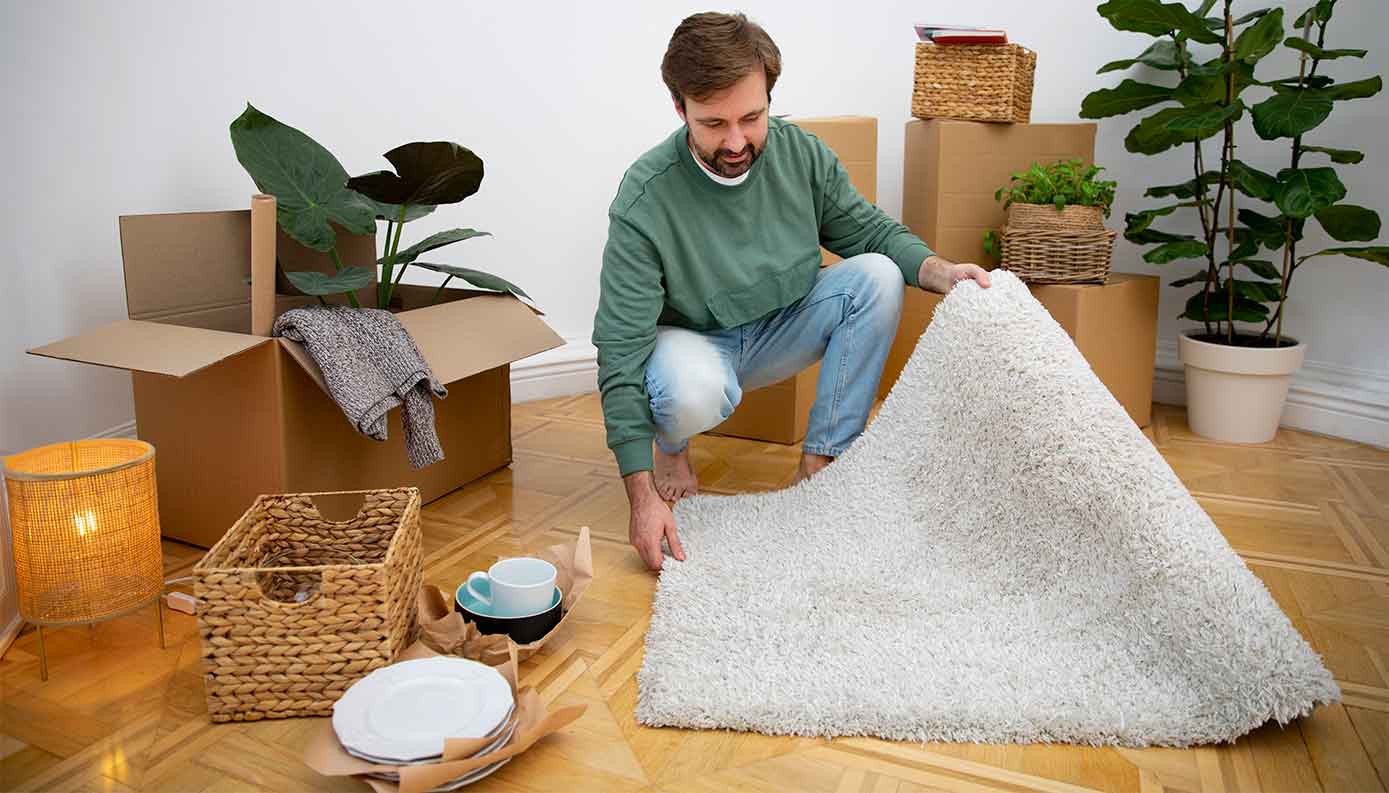Moving to a new home is an exciting milestone, but the process of packing can often feel daunting. With the right strategy and a detailed checklist, you can turn this potentially stressful task into a smooth and manageable experience. Whether you’re handling the packing yourself or hiring professional movers, this guide will provide essential tips and step-by-step instructions to ensure your move is as efficient and stress-free as possible.
Essential Insights You Wish You Knew Before Tackling Packing
Before you start packing, it’s important to have a clear plan in place. Here are some key points to consider:
- Start Early: Kick off your packing adventure at least a month ahead of your move. Trust me, nothing is worse than scrambling to pack your kitchen at 3 AM the night before moving day.
- Declutter: Take a trip down memory lane and decide what stays and what goes. Those jeans you haven’t worn in three years? Time to donate. The less you have, the less you need to pack—and your future self will thank you.
- Inventory: Make a master list of all your belongings. Not only does this help you keep track of everything, but it also comes in handy for insurance. Plus, you won’t find yourself wondering where your favorite book ended up.
Learn more: The Ultimate Moving Checklist – 20+ Best Tips for Moving
Stock Up on Must-Have Packing Supplies
To pack efficiently, you need the right tools. Here’s a list of essential packing items:
- Packing Boxes: Grab a variety of sizes to fit everything from books to kitchenware. Imagine trying to fit your entire shoe collection in one tiny box—trust us, you’ll want options.
- Packing Tape: Invest in strong, durable tape to keep your boxes sealed tight. The last thing you need is a box bursting open mid-move, scattering your favorite mugs everywhere.
- Bubble Wrap: Protect your fragile items like that cherished glass vase or your grandmother’s china. You don’t want any heart-wrenching surprises when you unpack.
- Packing Paper: Use it to wrap delicate items and fill empty spaces in boxes. It’s perfect for avoiding the dreaded sound of clinking glass during transit.
- Markers: Clearly label each box with its contents and the room it’s headed to. It’ll save you from the chaos of hunting for your coffee maker on the first morning in your new home.
- Scissors and Box Cutters: Keep these handy tools around for cutting tape and boxes. You’ll thank yourself when you’re not struggling to tear tape with your teeth.
- Furniture Covers: Protect your sofas, mattresses, and other large items from dust and scratches. No one wants to see their couch arrive with a new, unwanted “distressed” look.
- Plastic Bags: Use them for small items and hardware, like screws and bolts from disassembled furniture. There’s nothing worse than losing the key components to your bed frame!
Learn more: 21 Essential Moving and Packing Supplies You Need For Your Next Move
10 Expert Packing Tips
1. Smooth and Stress-Free Move
- Label Everything: Because who doesn’t love opening a mystery box when you’re looking for kitchen utensils? Write down the contents and the room it belongs to—save yourself the scavenger hunt.
- Pack Room by Room: Stay organized and avoid chaos by tackling one room at a time. Unless, of course, you enjoy finding bathroom towels in with your office supplies.
- Heavier Items in Smaller Boxes: Your back will thank you. Imagine trying to haul a giant box full of books—don’t be that person.
- Don’t Overpack Boxes: Leave some breathing room. No one enjoys playing a game of “catch the box” when it decides to burst open on the stairs.
- Use Original Boxes: If you’ve still got the original packaging for your electronics, use it. Otherwise, get ready to play the puzzle game of fitting your TV into a random box without the styrofoam.
Learn more: 3 Things to Get Rid of Before Moving
2. Pack Fragile Items
- Wrap Individually: Give each fragile item its cozy bubble wrap or packing paper blanket. Trust me, you don’t want to find out your favorite mug didn’t survive the trip.
- Fill Gaps: Stuff packing paper or bubble wrap into any empty spaces in the box. It’s like giving your delicate items a snug hug to keep them from jostling around. No one wants a shattered wine glass collection!
- Label as Fragile: Slap a big “FRAGILE” sticker on those boxes. Think of it as a polite heads-up to the movers not to throw it around like a football.
Learn more: 41 Best Moving And Packing Tips That Will Make Your Move Dead Simple
3. Pack Clothes and Textiles
- Wardrobe Boxes: Perfect for hanging clothes—keep your suits and dresses wrinkle-free and ready to wear. No need to iron everything again after the move!
- Suitcases and Duffle Bags: Maximize your luggage by filling it with clothes and textiles. It’s a great way to transport your wardrobe and save on boxes. Plus, you won’t have to worry about finding your favorite jeans on the first day in your new place.
- Vacuum Seal Bags: Ideal for bulky items like blankets and pillows. Compress them down to save space and make packing a breeze. Your cozy comforter will take up half the room it used to!
Learn more: 10 Tips to Make Space for Clothes During Your Move
4. Packing Bulky and Heavy Items
- Disassemble Furniture: Break down furniture pieces when possible. Trust me, it’s much easier to maneuver a bed frame in pieces than trying to squeeze it through a narrow doorway.
- Use Furniture Covers: Wrap your furniture in covers to shield it from scratches and dings. Think of it as giving your couch a protective armor for the journey ahead.
- Use Dollies and Straps: These handy tools make moving heavy items a breeze. Your back will thank you when you’re effortlessly gliding your washing machine out the door instead of wrestling with it.
Learn more: How to Protect Your Antique Furniture While Moving
5. Handling Special Items
- Electronics: If you still have the original boxes, use them! If not, wrap your gadgets in bubble wrap and pack them in sturdy boxes. You’ll thank yourself when your TV arrives in one piece, ready for your first movie night.
- Valuables: Keep your important documents, jewelry, and other valuables with you. Imagine the relief of having your passport and treasured heirlooms safely by your side, rather than lost in the moving truck shuffle.
Learn more: Packing Ornaments: Essential Tips for Moving and Storage
6. Packing Outdoor Furniture and Garage Items
- Clean First: Give your outdoor furniture and tools a good clean before packing. No one wants to unpack a dirty grill or muddy rake in their new home.
- Disassemble: Break down larger pieces to make transport easier. Dismantling that bulky patio set will save you a lot of hassle on moving days.
- Use Durable Boxes: Pack tools and heavy items in sturdy boxes that can handle the weight. Your trusty power drill deserves a secure, strong box, not one that’s going to fall apart halfway to the truck.
7. Mastering the Art of Packing Your Kitchen and Pantry
- Use Small Boxes: Pack dishes and glassware in smaller boxes. Unless you enjoy the thrill of lifting a box that’s about to give out and send your grandma’s china crashing to the floor.
- Wrap Each Item: Bubble wrap or packing paper for each dish and glass. Because you want to spend your afternoon wrapping plates individually instead of binge-watching your favorite series.
- Pack Pantry Items Last: Save non-perishable pantry items for last. You don’t want to open a box of expired spaghetti sauce and crushed cereal when you finally get to your new kitchen.
8. Quick Tips for Last-Minute Packing
- Keep a Packing Kit Handy: Have a go-to kit with essentials like tape, markers, and scissors for those last-minute packing frenzies. Trust me, you don’t want to be hunting for scissors when you’re down to the wire.
- Pack an Essentials Box: Throw together a box of must-haves for your first night, like toiletries, a change of clothes, and some basic kitchen supplies. You’ll be glad when you can brush your teeth and make coffee without tearing through 20 boxes.
- Stay Calm: Don’t panic! Take a deep breath and tackle one thing at a time. Rushing only leads to chaos and forgotten items—like the time I ended up packing my toothbrush in the box marked “garage tools.”
Learn more: How to Have an Environmentally Friendly Move
9. Packing Pitfalls: Common Mistakes to Avoid
- Procrastination: Don’t wait until the last minute to start packing. Unless you love the adrenaline rush of cramming your entire kitchen into boxes the night before the move.
- Overpacking Boxes: Avoid stuffing boxes to the brim. Overloaded boxes can break or cause injuries. No one wants to end up with a busted box of books halfway down the stairs.
- Skipping Labels: Always label your boxes. Trust me, you don’t want to spend your first night searching for a box of pajamas in a sea of unlabeled cartons.
- Ignoring Valuables: Keep your important items with you. Imagine the horror of losing your passport or favorite necklace in the chaos of the moving truck.
- Forgetting Essentials: Pack a box of must-haves for your first day in your new place. You’ll be thankful when you don’t have to dig through piles of boxes just to find your toothbrush and a clean shirt.
Learn more: How to Have an Environmentally Friendly Move
10. Booking a Moving Service: A Step-by-Step Guide
- Do Your Homework: Look up reputable moving companies with solid reviews. You don’t want to end up with a company that handles your stuff like it’s gym equipment.
- Get Quotes: Gather multiple quotes to compare prices and services. It’s like shopping for a new phone—don’t settle for the first one you see.
- Check Credentials: Make sure the movers are licensed and insured. The last thing you need is an unlicensed company that disappears with your belongings.
- Book Early: Schedule your moving service ahead of time to get your preferred date. You don’t want to be left scrambling for movers at the last minute, just like finding concert tickets right before the show.
Learn more: How To Find The Best Moving Truck Rental For Your Needs
Moving Tips and Hacks
- Use Linens for Padding: Wrap your fragile items in towels and linens. It’s like giving your glassware a cozy blanket and saving money on bubble wrap.
- Color-Code Boxes: Slap colored labels on your boxes to show which room they belong to. It’ll save you from the chaos of figuring out where everything goes—like not putting your bathroom stuff in the kitchen.
- Photograph Electronics: Snap pictures of your electronic setups before disassembling them. Trust me, you’ll thank yourself when you don’t have to play “Which cable goes where” with your TV and sound system.
- Keep Hardware Together: Put screws and small parts in plastic bags and tape them to the corresponding furniture. No more frantic searches for that one missing bolt when reassembling your bed frame.
- Pack an Overnight Bag: Have a bag with all the essentials for your first night in the new place. You’ll be glad to have your toothbrush, pajamas, and a fresh outfit without tearing through boxes.
Moving with Kids: Because It’s So Easy
- Involve Them: Let the kids help pack their stuff. Sure, it might mean finding toys in with your kitchen utensils, but hey, it keeps them busy and makes them feel involved.
- Keep a Routine: Stick to regular routines to keep the chaos at bay. Nothing says “stress-free move” like trying to maintain bedtime while surrounded by boxes and bubble wrap.
- Pack a Special Bag: Include their favorite toys and comfort items to keep them occupied. You’ll be grateful for that stuffed animal when the inevitable “Are we there yet?” starts up ten minutes into the drive.
Learn more: The Ultimate Moving-Out-of-State Checklist 2024
Moving with Pets: Keeping Your Furry Friends Happy
- Prepare a Pet Kit: Pack a special kit with food, water, medications, and comfort items. Imagine your pet’s joy when they find their favorite toy and a familiar snack amidst the moving chaos.
- Keep Them Secure: Make sure your pets are safe and secure during the move. Whether it’s a comfy carrier for your cat or a designated spot in the car for your dog, preventing escapes and accidents is key—no one wants to chase a runaway pet on a moving day.
- Update Information: Update your pet’s tags and microchip info with your new address. The last thing you want is for Fluffy to get lost and not have up-to-date contact details.
Learn more: Essential Tips for Moving with Pets: The Ultimate Guide
Why Choose Clutter?
Choosing a professional moving company like Clutter can make your move easier and more efficient. With experienced professional packers for moving, you can ensure your belongings are handled with care. Clutter offers comprehensive moving and packing services, providing packing help and house packing services tailored to your needs. Trust Clutter to make your household shifting and shifting home experience seamless and stress-free.
Begin your move confidently! Reserve your slot today!
Conclusion
Packing for a move doesn’t have to be a daunting task. With the right approach and detailed planning, you can make the process smooth and efficient. Remember to start early, gather the necessary packing items, and follow the tips and strategies outlined in this guide. Whether you’re packing on your own or hiring professional movers, staying organized and proactive will help ensure a successful move. Happy moving!
Learn more: 4 Best Moving and Storage Apps to Make Your Move Stress-Free
FAQs for a Stress-Free Move
Q: How early should I start planning my long-distance move?
It’s best to start planning your long-distance move at least 8-12 weeks in advance. This gives you ample time to sort, pack, and address any last-minute issues without stress.
Q: What’s the best way to pack heavy items like books?</strong
Pack heavy items like books in smaller boxes to avoid making them too heavy to carry. Use sturdy boxes and fill any gaps with packing paper to prevent shifting and damage.
Q: How can you make unpacking easier at your new home?
Label each box with its contents and the room it belongs to. Create an “essentials” box with items you’ll need right away, like toiletries, a change of clothes, and basic kitchen supplies.
Q: What items should you keep with yourself instead of packing in the moving truck?
Keep important documents, jewelry, medications, and personal valuables with you during the move. This ensures they are safe and easily accessible when you need them.
Q: Are there any items I shouldn’t pack for a move?
Avoid packing hazardous materials like chemicals, flammable items, and perishable food. Also, consider leaving behind items that are no longer needed or that can be easily replaced.








